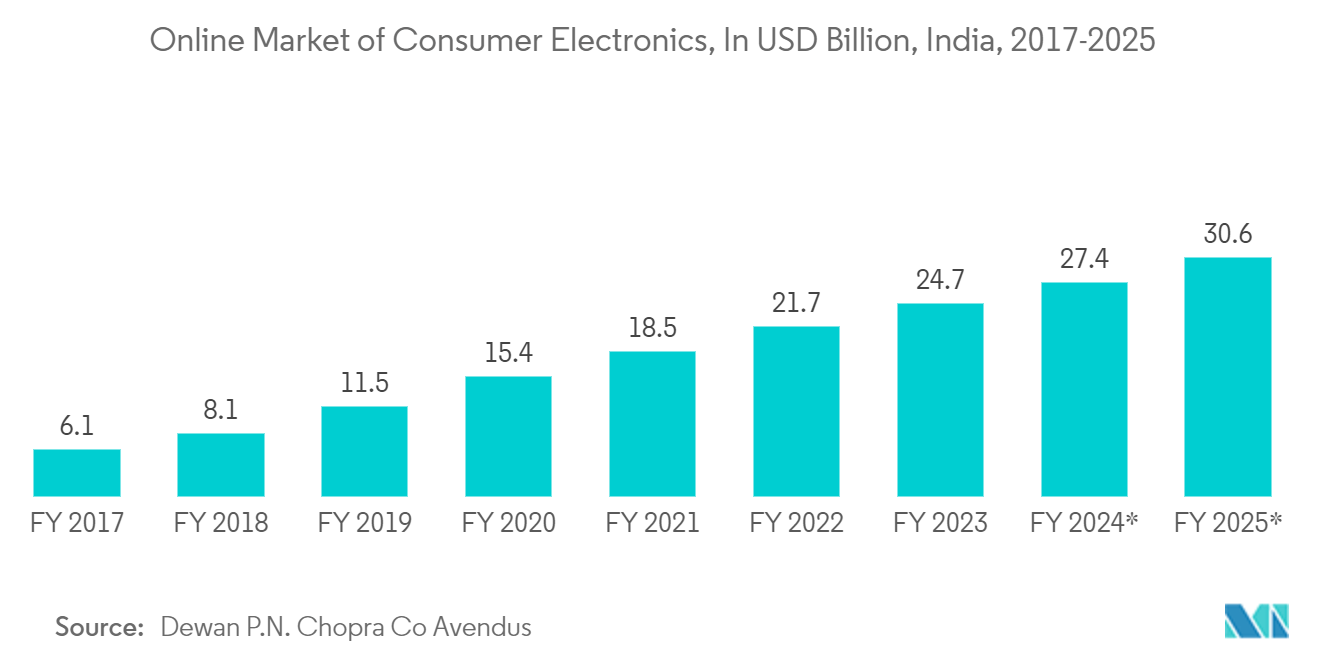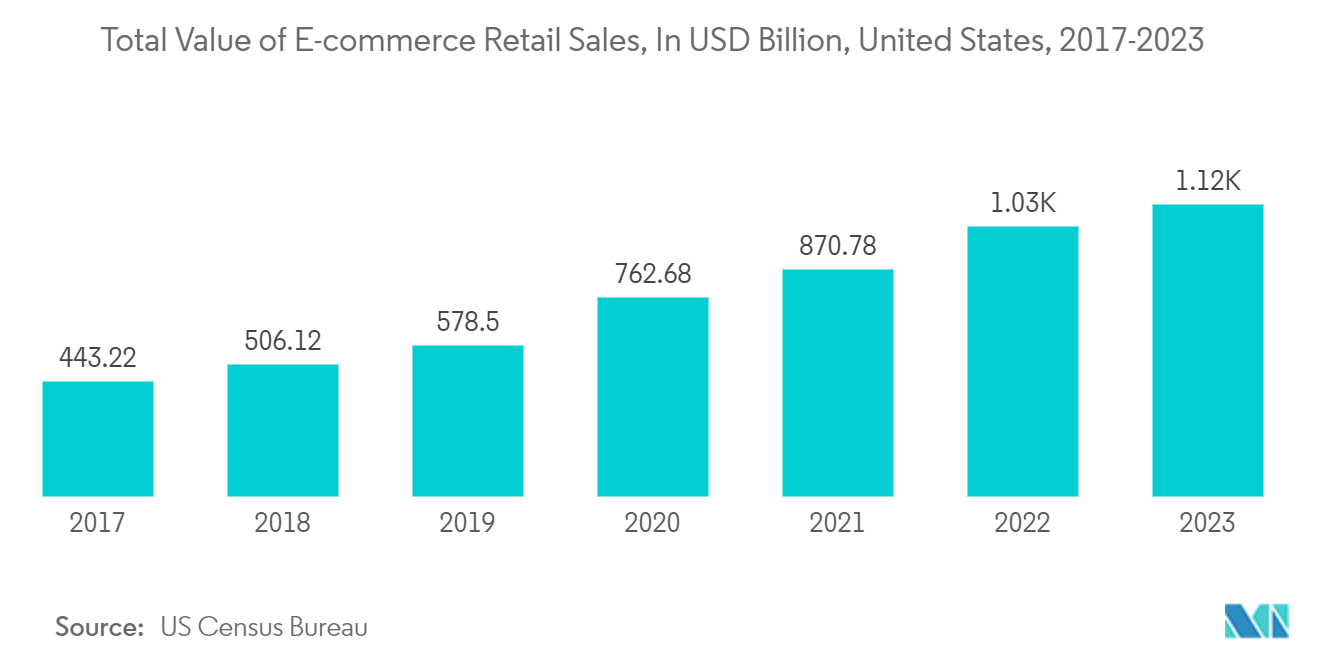Market Trends of Sustainable E-Commerce Packaging Industry
Online Sales of Consumer Electronics is Expected to Drive Top-Line
- Manufacturers of consumer electronics packaging products are increasingly using protective packaging items, such as air bubble wraps, air pillows, and other inflated packaging products, to shield devices. It is anticipated that in the future, these packaging alternatives will satisfy the requirements of all electronic categories. The packaging of small consumer goods in blisters works effectively. This plastic packaging makes the items stand out and offers tamper protection while still being straightforward to open.
- Electronic product packaging that is environmentally friendly is growing in popularity. Regulators and government authorities have vigorously pushed for eco-friendly or green packaging. Brands and consumers alike are recognizing the necessity of protecting the environment from non-biodegradable packaging trash. For instance, in January 2023, Flipkart introduced an e-store for sustainable products. The company hopes that it will be able to make a difference and encourage informed buying decisions while being transparent, consumer-oriented, and eco-friendly.
- According to the investment analysis firm Avendus and a key CA firm based out of India, Dewan P.N. Chopra & Co., the size of the consumer electronics market across India from 2017 is expected to increase almost five times by 2025 to USD 30.6 billion. Therefore, this significant uptick in online consumer electronics across the country is anticipated to push the demand for recyclable and biodegradable sustainable packaging options in the coming years.
- Several global companies like Amazon, Alibaba, Walmart, and others are gradually understanding that the environmental impact of devices extends to packaging as well. Amazon set a robust objective to have all Amazon device packaging completely recyclable by the end of 2023, a new record for the consumer electronics sector. About 79.5% of product launches in 2022 were fully recyclable.
- Using appropriate materials is crucial in making consumer electronics packaging sustainable. By carefully selecting the materials for wrapping, packing, and transporting electronics, it becomes simpler to achieve business' carbon emission targets and sustainability objectives. Embracing sustainable packaging solutions for electronic products not only helps in reaching these goals but also attracts the increasing population of environmentally conscious consumers who prioritize eco-friendly choices.

North America to Hold Significant Market Share During the Forecast Period
- The COVID-19 pandemic accelerated the transition to e-commerce sales and raised awareness of the environment and sustainability in the United States. Consumers increasingly turned to online shopping, and that pattern endured even when stores reopened, resulting in the demand for eco-friendly packaging. E-commerce spending in the United States is rising, driven by the convenience of home delivery, merchants’ omnichannel capabilities, and contextual customer experiences.
- The United States Plastics Pact recently published its annual report, highlighting its efforts to create a circular economy for plastics, primarily through a reassessment of packaging design. The consortium has successfully achieved its initial objective of identifying a list of problematic and unnecessary materials that it seeks to eliminate from plastic packaging by 2025. However, other aspirations, such as ensuring that all plastic packaging is reusable, recyclable, or compostable, may not be met by the 2025 deadline.
- Several players across the region consistently make efforts by launching products or starting initiatives with vertical or horizontal integration to boost environment-friendly packaging for e-commerce channels. In June 2023, Boox, a sustainable e-commerce platform, partnered with ReturnBear, a package-free returns network in Canada. This collaboration aims to enhance Boox's services in the Canadian market by promoting a more circular system within the e-commerce industry. As a result, Boox will extend its solutions and services to industry partners throughout Canada, effectively implementing the packaging loop within the region.
- Canada’s e-commerce infrastructure is highly developed and closely integrated with that of the United States. The major online retailers in Canada include Amazon, Walmart, Canadian Tire, Costco, Best Buy, Hudson’s Bay, and Etsy. Overall, North American consumers increasingly rely upon the Internet to place orders. Internet consumer sales have grown more in the past decade than traditional retail sales.
- The total percentage of e-commerce is rapidly growing in terms of total retail sales, primarily in developed countries like the United States and Canada. According to the US Census Bureau, the value of retail e-commerce sales in the United States has been growing significantly, especially after the pandemic. In 2023, the value of e-commerce retail trade sales in the United States exceeded USD 1.118 trillion, marking a significant increase from USD 762.68 billion in 2020. Overall, as consumer lifestyles and food demands change and retailers work closely to accommodate those demands, packaging is anticipated to experience a dynamic transformation.


